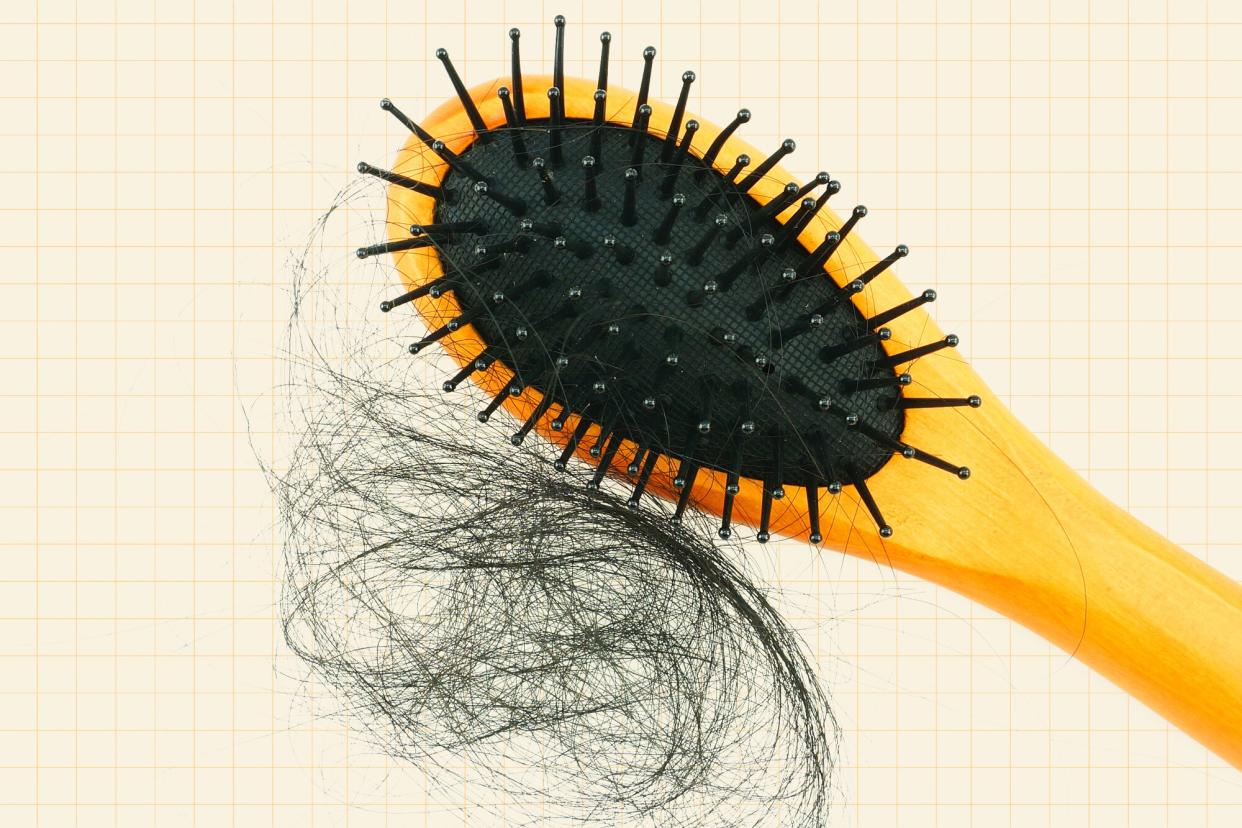How to Prevent Hair Loss, According to Experts

Getty Images / Niwan Nuntasukkasame / EyeEm
It's very normal—expected even—to regularly lose hair. In fact, you can lose from 50 to 100 strands of hair a day, according to the American Academy of Dermatologists. And if you have long hair, that day-to-day loss is likely to be more noticeable. Hair loss is also more common than you might realize: close to 50 percent of men and women experience pattern hair loss by age 50.
Related: 5 Sneaky Reasons Why You Might Be Losing Hair Right Now, According to Experts
An uptick in hair loss is usually one of two things: you're either shedding hair more than usual, or something is causing your hair to no longer grow. There are also conditions where your hair is so fragile that it breaks easily and you literally cannot grow long hair.
Google hair loss and you'll see there are a handful of named conditions. Telogen effluvium is one of the more common terms you'll find. It's when you shed more hair than usual. Another example is anagen effluvium, and that's when your hair stops growing. But that's different from male- and female-pattern hair loss (aka balding), which is medically known as androgenetic alopecia.
Whatever the official diagnosis is—it can be incredibly frustrating, even depressing if it's noticeable to others. So what's causing your hair loss and can you stall, halt, or reverse it?
What Causes Hair Loss?
Why does it seem as if you've all of a sudden become a super shedder? Or perhaps your hair just won't grow. Research suggests that 40 percent of women lose extra hair every day because of how they style it. But that's not the only cause. Here are some of the leading reasons, according to experts:
Hairstyles that pull on hair
Harsh hair-care products
Lost 20 pounds or more
Recently given birth (aka post-partum)
Increased life stress, such as taking care of a sick loved one, divorce, losing a job
Recovering from an illness (especially if you had a high fever) or operation
Recent trauma
Stopped taking birth control pills
Side effect of some drugs and treatments
Nutritional disorder or deficiency (e.g., iron deficiency, hypothyroidism)
Immune system overreaction
Hereditary hair loss
Can You Slow, or Reverse, the Loss?
If you're losing hair or it's thinning, it is possible to reign in that loss, and even reverse it. Some treatments are at-home and/or over-the-counter. Others require a medical professional. Here's are 5 treatments experts recommend.
1. Platelet-rich plasma, or PRP, injection
Pursuing PRP injections for hair loss requires a medical professional to draw your blood, separate it (via centrifuge spinning) into its different components, recombine the plasma and platelets from your blood, and then inject it into your scalp. Reach out to your doctor to see if this type of treatment is right for you.
2. Hair transplants
Another treatment that requires a medical professional, this one is the best treatment for smaller bald areas versus general thinning.
3. A medication like Rogaine
Also known as minoxidil, this is an easy-to-use over-the-counter treatment. It can take a few months to work, and doesn't work on everyone, but when it does work it has a nice one-two punch of preventing further hair loss and also stimulating growth. Perhaps the biggest drawback is that when you stop using it, hair loss returns.
4. Scalp massage
Although the research on scalp massage is preliminary, this is an easy-to-implement treatment. Plus, you're probably already familiar with how relaxing a scalp massage is when you get your hair washed before a haircut. In a small study, men used a tool to massage their head for four minutes a day for about 6 months (24 weeks). Initially there was some hair loss, but with time the actual hair strands thickened. Plus, an analysis of gene expression found that hair cycle-related genes were stimulated and hair loss-related genes were decreased.
5. Style with care
Bleaching, dyeing, perming, using heated hair tools, even brushing in excess can all damage your hair, weakening the shaft, and making hair loss more likely. When it comes to styling your hair (including the products you add to your hair and wash it with), less is typically best. But also, if doing nothing to your hair is unrealistic for you, you'll appreciate the findings of an Annals of Dermatology study. Researchers tested different hair drying methods and found that using a hair dryer at a distance of about 5 to 6 inches from your head, and in continuous motion, was the gentlest drying method for hair—and even more gentle than letting hair air dry.
The Verdict Is Still Out on Supplements
We know that certain nutrients—like biotin, protein, vitamin D, zinc, and iron—play a role in helping your body produce a healthy head of hair. A deficiency in those nutrients (even just one) has been linked to hair loss. But what's unknown still is if supplementing your diet with, or making a concerted effort to get those nutrients into your diet, will encourage hair re-growth or prevent hair loss, per a 2017 study in the journal Dermatology Practical & Conceptual. As always, consult your doctor before trying anything new.

